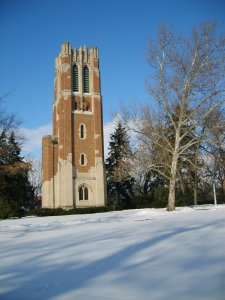The Lansing State journal has a very nice guest column by Geoff Koch, who was the director of communications at the National Superconducting Cyclotron Laboratory during the bid for the Facility for Rare Isotope Beams (FRIB, pronounced F-RIB, see posts tagged ‘FRIB’ to learn more). Koch is now moving to Oregon, but he was among those who worked very hard to bring FRIB to MSU.
Near the end of the column Koch writes
For me, the night sky on my drive west will bring something else to mind – that optimism, hard work, and community are just as powerful as nuclear reactions inside stars.
Michigan State really is a special place. I grew up near two state universities, and never did a I witness the sort of relationship that MSU and the Lansing community have. Perhaps it is related to the mission of land grant universities. I’m not sure. I do know, having moved for graduate school in an East Coast city at a smaller private university, that there is something wonderful and unique in mid-Michigan, something which even in the roughest of times brings a bit of hope and excitement, something which undoubtedly will aid in recovery from whatever difficulties a community and university might experience. I have left but would gladly return one day later. In the meantime I pray that both school and community nurture and cherish the gift they have.
I must also add that for all the thanks Koch offers, he and his colleagues must be thanked as well. In another life, I would have been among them, and despite taking a different path for now I learned much about communicating science from Koch during our occasional interactions. Best wishes to him and his family in his new endeavor.

